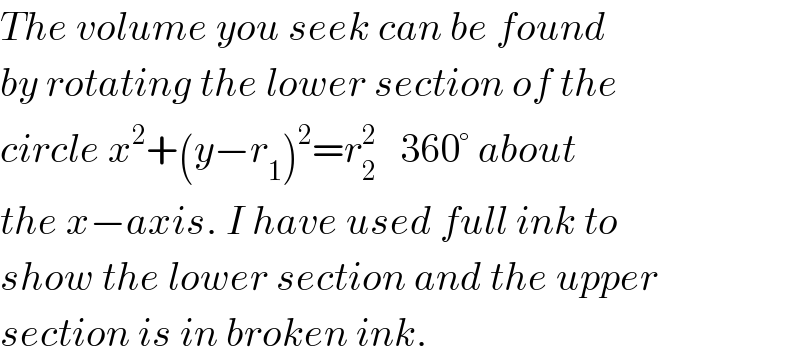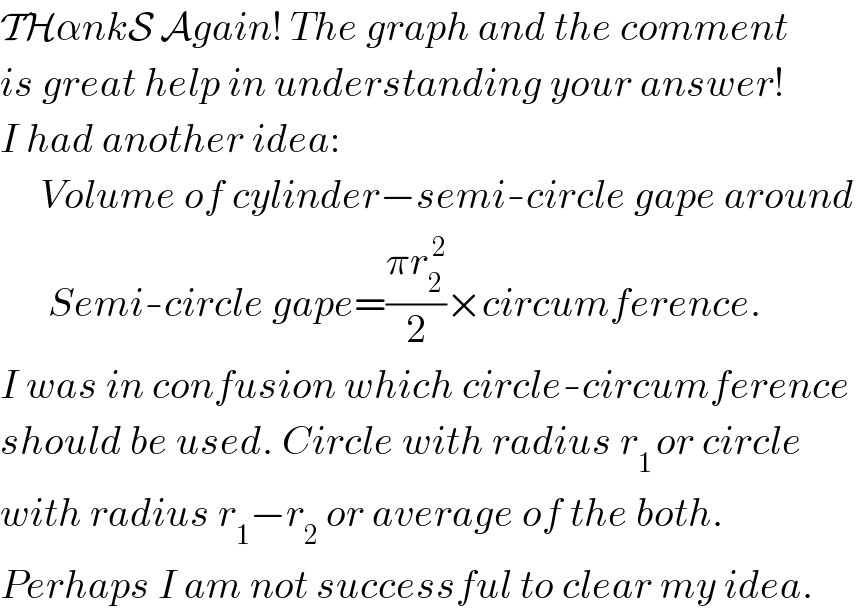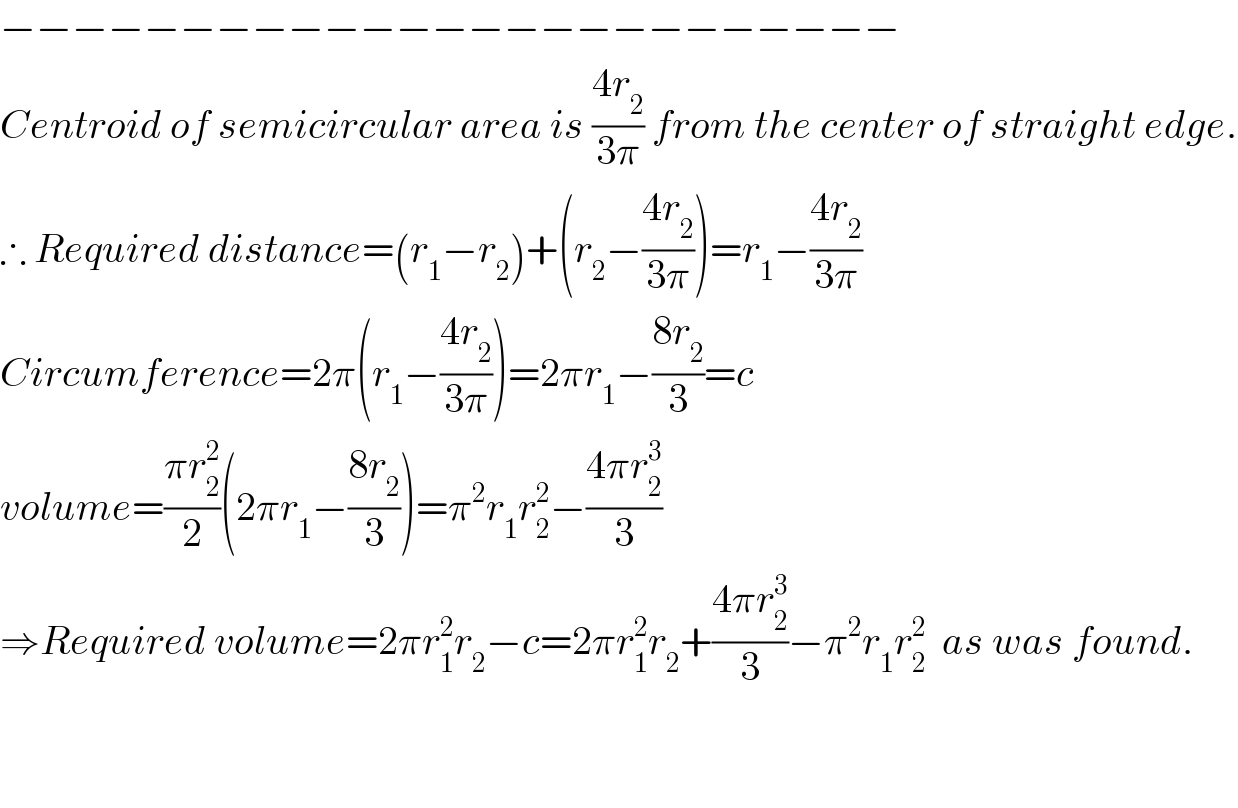
Question and Answers Forum
Question Number 7314 by Rasheed Soomro last updated on 23/Aug/16

Commented by Rasheed Soomro last updated on 23/Aug/16

Answered by Yozzia last updated on 24/Aug/16
![Define the circle w with cartesian equation x^2 +(y−r_1 )^2 =r_2 ^2 where r_1 >r_2 >0. ⇒y=r_1 ±(√(r_2 ^2 −x^2 )) {∣x∣≤r_2 }. The problem given can be viewed as finding the volume V of the figure generated when a part of w, whose y coordinates satisfy 0<y≤r_1 , is rotated 2π radians about the x−axis. ∴ y=r_1 −(√(r_2 ^2 −x^2 )) {∣x∣≤r_2 }. Using V=π∫_(−r_2 ) ^( r_2 ) y^2 dx we get V=2π∫_0 ^r_2 (r_1 −(√(r_2 ^2 −x^2 )))^2 dx {y^2 is even}. V=2π∫_0 ^r_2 {r_1 ^2 +r_2 ^2 −x^2 −2r_1 (√(r_2 ^2 −x^2 ))}dx Let x=r_2 sinθ 0≤θ≤2π.⇒dx=r_2 cosθdθ. At x=0,θ=0 and at x=r_2 , θ=(π/2). ∴V=2πr_2 ∫_0 ^(π/2) {r_1 ^2 +r_2 ^2 −r_2 ^2 sin^2 θ−2r_1 (√(r_2 ^2 −r_2 ^2 sin^2 θ))}cosθdθ V=2πr_2 [∫_0 ^(π/2) (r_1 ^2 +r_2 ^2 )cosθ dθ−r_2 ^2 ∫_0 ^(π/2) sin^2 θcosθdθ−2r_1 r_2 ∫_0 ^(π/2) cos^2 θdθ] V=2πr_2 [r_1 ^2 +r_2 ^2 −{((r_2 ^2 u^3 )/3)}_0 ^1 −r_1 r_2 ∫_0 ^(π/2) (1+cos2θ)dθ] V=2πr_2 [r_1 ^2 +r_2 ^2 −(r_2 ^2 /3)−r_1 r_2 {θ+(1/2)sin2θ}_0 ^(π/2) ] V=2πr_2 [r_1 ^2 +(2/3)r_2 ^2 −((r_1 r_2 π)/2)] V=((πr_2 )/3)[6r_1 ^2 +4r_2 ^2 −3πr_1 r_2 ] V=((2πr_2 )/3)(3r_1 ^2 +2r_2 ^2 )−π^2 r_1 r_2 ^2 V=2πr_1 ^2 r_2 +((4πr_2 ^3 )/3)−π^2 r_2 ^2 r_1 −−−−−−−−−−−−−−−−−−−−−−−−−− By Pappus−Guldin theorem, V=2πAy^� where A=area bounded between y=r_1 −(√(r_2 ^2 −x^2 )), lines y=0, x=±r_2 and y^� =distance of centroid of A from axis of rotation (y=0). ∴ y^� =(V/(2πA)). It can be shown that A=((r_2 (4r_1 −πr_2 ))/2). ∴ y^� =((((πr_2 )/3)(6r_1 ^2 +4r_2 ^2 −3πr_1 r_2 ))/(2π((r_2 (4r_1 −πr_2 ))/2))) or y^� =((6r_1 ^2 +4r_2 ^2 −3πr_1 r_2 )/(3(4r_1 −πr_2 )))](Q7336.png)
Commented by Rasheed Soomro last updated on 24/Aug/16

Commented by Yozzia last updated on 24/Aug/16

Commented by Yozzia last updated on 24/Aug/16

Commented by Rasheed Soomro last updated on 24/Aug/16

Commented by Yozzia last updated on 24/Aug/16

